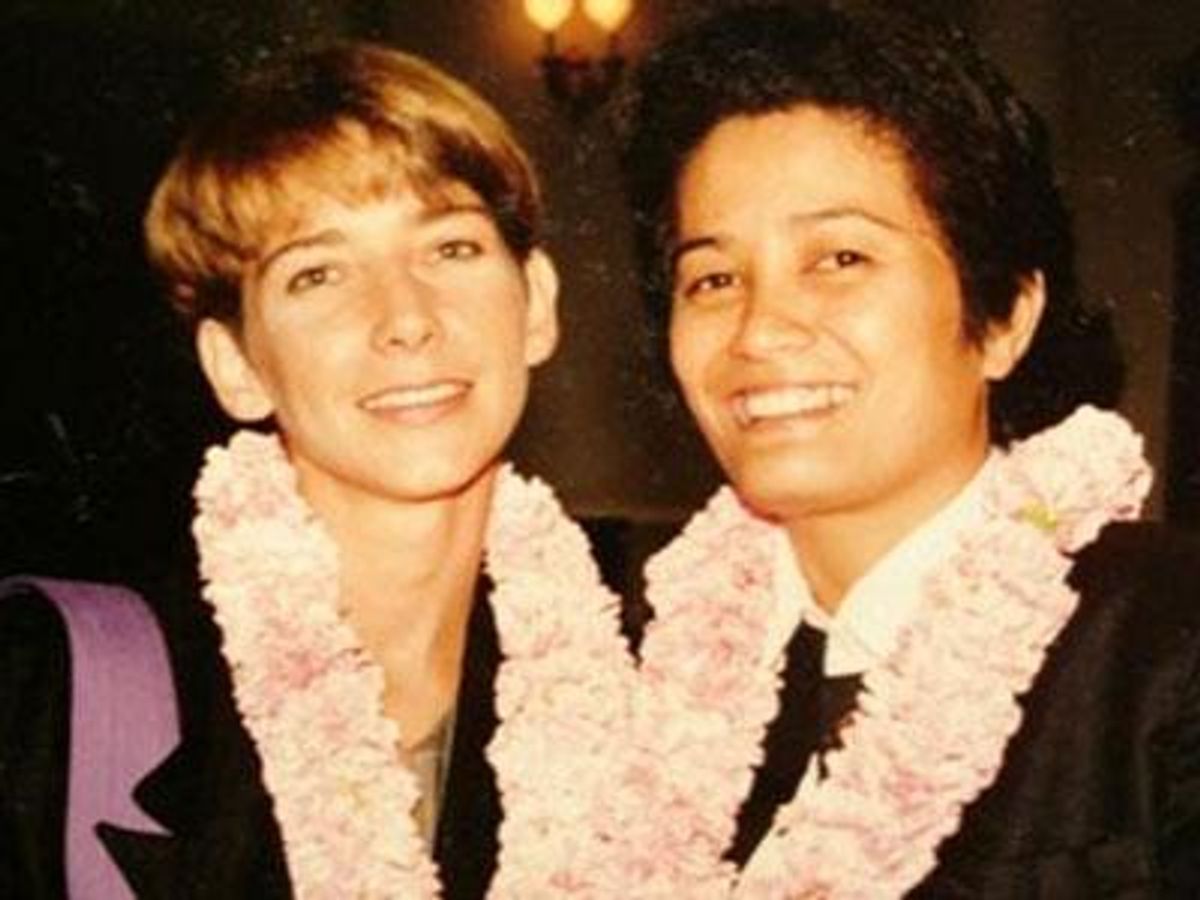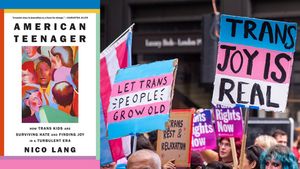Twenty years ago, everyone loved the Macarena, Beanie Babies were an acceptable form of currency, and only about 30 percent of the country supported the freedom to marry for same-sex couples.
Today, national support is well over 50 percent. So what changed? Find out in the video below:
The journey to today's majority-support reality began in 1991, when Ninia Baehr and Genora Dancel (pictured below) sued Hawaii. They had a strong argument -- that the state constitution protected the freedom to marry. Public opinion didn't shift too much at first, in part because there still wasn't much visibility for LGBT Americans.

But that started to change around 2004, when the Massachusetts Supreme Court legalized marriage, and San Francisco started issuing licenses to same-sex couples. This was the first time that Americans saw real gay couples getting actually getting married, and public support started immediately climbing. Over the next couple of years, people got more and more accustomed to the idea and opposition kept falling away.
California's now-defunct Proposition 8 was another major milestone. Nationally, public support was only about 10 points higher than it was in 2000, but people felt a lot more strongly about the legal foundation of marriage equality in 2008. We saw huge protests, a renewed push to overturn marriage bans, and lots of new supporters coming around.
It was around 2011 that support and opposition finally crossed. That's because there was another major change in the way we talked about marriage. Previously, marriage equality ads were all about abstract rights and discrimination. That made voters think that LGBT people only married for political or financial reasons. But when actual gay people and their families started appearing in ads, talking about love, commitment, and family, the nation saw two historic firsts: support for equal marriage topped 50 percent, and voters in four states approved marriage equality.
We'd reached a tipping point by 2013, when the U.S. Supreme Court overturned the Defense of Marriage Act and restored marriage in California. Support for marriage equality is now increasing by about 3 percentage points per year.
Of course, there will always be those who remain opposed to civil rights no matter what. In the past, when we've seen legal progress, it's often followed by a backlash -- think DOMA in the '90s and the onslaught of state-level constitutional bans on same-sex marriage in the 2000s.
Sure enough, the same thing's happening again, with turn-away-the-gays bills. Indiana was just the beginning -- in the last year there have been dozens of proposed laws to discriminate against LGBT people, and it's hard to see these as anything but a backlash against all the recent marriage equality wins. These laws can often be sneaky, seemingly harmless, disguised as something seemingly appealing like "religious freedom."
Though the backlash is a serious concern, the country's legal trajectory is fairly clear, and we're likely to see marriage equality secured as the law of the land soon. Support will be over 60 percent by the next presidential election, with no sign of slowing -- let alone turning around.


















































































Viral post saying Republicans 'have two daddies now' has MAGA hot and bothered